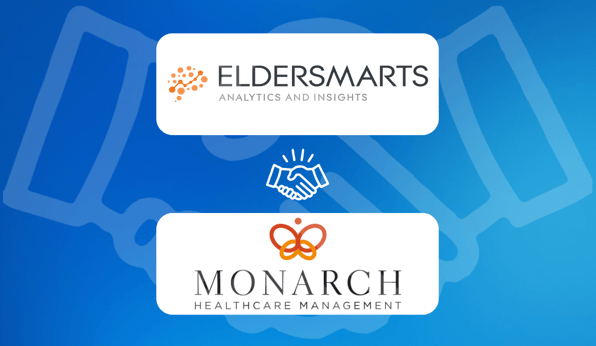4 Trends Shaping Senior Living Occupancy Rates in 2023

The COVID-19 pandemic and other recent economic challenges have reshaped the senior housing landscape. Many organizations face persistent staffing woes and stubbornly high vacancy rates. Fortunately, it's not all doom and gloom. Senior living occupancy rates are finally on the upswing, and recent technological innovations have streamlined marketing operations.
Keeping up with the state of the industry can help your organization adapt and innovate, too, so here are four of the latest trends affecting assisted living occupancy rates in 2023:
1. National Demand for Senior Housing Grows Slowly but Surely
Occupancy rates declined sharply in many senior living communities during the pandemic. However, data from the National Investment Center for Seniors Housing & Care (NIC) shows that this trend has finally started to reverse.
A series of quarterly reports called the NIC MAP Vision Market Fundamentals reveal that the national senior housing occupancy rate has increased consistently over the last year:
- Second quarter of 2022: 81.4%
- Third quarter of 2022: 82.1%
- Fourth quarter of 2022: 83%
- First quarter of 2023: 83.2%
This growth may seem slow, but national occupancy rates have increased by over 5 percentage points since the pandemic low of 77.8% in the second quarter of 2021. Additionally, NIC’s Chief Economist Beth Burnham Mace indicates that over 30% of surveyed senior living organizations have occupancy rates at or above 90%, indicating a widespread return to normalcy.
Even so, the industry has not yet reached pre-pandemic levels, which peaked at 87.2% in 2020, and occupancy rates remain below 80% for almost 40% of senior living communities. There’s still plenty of room for growth.
2. Seniors Flock to Assisted Living Communities
Assisted living units have become a hot commodity. The NIC reports that the national occupancy level for these communities grew from 7.3% between the pandemic low and the first quarter of 2023. Currently, the assisted living occupancy rate is 81.2%.
NIC’s Senior Principal Caroline Clapp attributes the assisted living boom to the popularity of needs-based services. Assisted living provides the perfect blend of amenities, easy access to healthcare providers, and privacy for seniors. Also, new community management solutions like Eldermark’s Engage make it easier for staff to plan exciting social and recreational activities.
Other property types have also seen increased demand year-over-year. NIC’s market data shows that independent living occupancy has grown nearly 4 percentage points since the pandemic and now hovers at 85.2%. Additionally, skilled nursing occupancy reached 81.0% in January 2023, a significant increase from the pandemic low of 74.5% in January 2021.
3. Texas Leads the Recovery for Senior Living Occupancy
Senior housing occupancy rates have risen unevenly across NIC MAP Primary Markets. As of the first quarter of 2023, only two major metropolitan areas have exceeded their pre-pandemic levels: Dallas (84.8%) and San Antonio (84.4%), though Portland, OR (86.6%) and Baltimore (86.3%) have also shown promising growth.
Of course, not all cities have experienced a post-pandemic recovery. Occupancy rates remain lower in areas like Atlanta (80.3%), Cleveland (79.5%), and Houston (78.5%).
4. The Economy Slows Construction of New Housing Units
Demographic data from the United States Census Bureau shows that the percentage of Americans aged 65 and older increased at a record pace between 2010 and 2020. This growing number of seniors will likely lead to strong demand for independent and assisted living communities. Currently, though, the new supply of senior housing properties has not kept pace with this population surge.
According to the NIC, the total number of senior housing units only grew by 0.3% between the fourth quarter of 2022 and the first quarter of 2023 – the lowest inventory growth within the sector in the last decade. According to the NIC's Chief Operating Officer Chuck Harry, this slowdown reflects wider economic trends, such as higher interest rates.
Fewer available units could boost move-ins in some areas as residents compete for fewer independent living, assisted living, and memory care units, but unless construction starts increasing soon, the industry may face a more serious real estate shortage in the long term.
Reimagine Your Marketing Strategies With Senior Living Solutions
Benchmarking with data from NIC, other industry authorities, or with analytics tools like ElderSmarts can help you understand how your organization stacks up against national and local competitors. Your community may be part of the elite 30% of organizations that have achieved 90% or higher occupancy, but you almost certainly still have room to maximize your performance.
Maybe you've just discovered that your occupancy rates haven't matched the national average. If so, don't despair – occupancy challenges are expected, widespread, and (most importantly) reversible.
New assisted living solutions enable all organizations to achieve consistently high occupancy rates. Here are four revolutionary tools you can use to recruit new residents more effectively and efficiently:
- Data Analytics: You don't need a statistician to transform your data into valuable insights. ElderSmarts' software can collect and analyze data from any source within seconds. You can figure out, for example, whether Facebook or Instagram generates more leads or what specific types of digital marketing initiatives your local competitors have found success with.
- Marketing Automation: Routine tasks like publishing blog posts and sending follow-up text messages to leads can quickly consume your sales team's schedule. Alternatively, you can let Eldermark's marketing automation integrations take care of these tedious jobs so your representatives can focus on what they do best: charming potential residents and dreaming up exciting new marketing campaigns.
- Customer Relationship Management: Nurturing leads can be rewarding but also complex and messy. Many sales professionals dread inputting contact information for dozens of leads into a glitchy spreadsheet or skimming through thousands of old emails for an elusive message from a prospective resident. Fortunately, Customer Relationship Management (CRM) software makes tracking target data and interactions fast and painless.
- Electronic Health Records: Collecting client new resident data is an essential but often time-consuming part of the move-in process. Implementing an electronic health record system, however, lets you gather necessary paperwork from providers quickly so you can hand over the keys to your residents’ new homes sooner.
Build Your Community With Eldermark Solutions
Senior living technology promotes higher occupancy rates and a better return on investment for your marketing initiatives. Eager to learn more? Check out Senior Living Occupancy: A Guide to Increasing Your Number of Residents for more cutting-edge marketing strategies.
You can also schedule a free demonstration to learn how Eldermark can help you build stronger client relationships, find new leads, and provide the highest quality of care.




